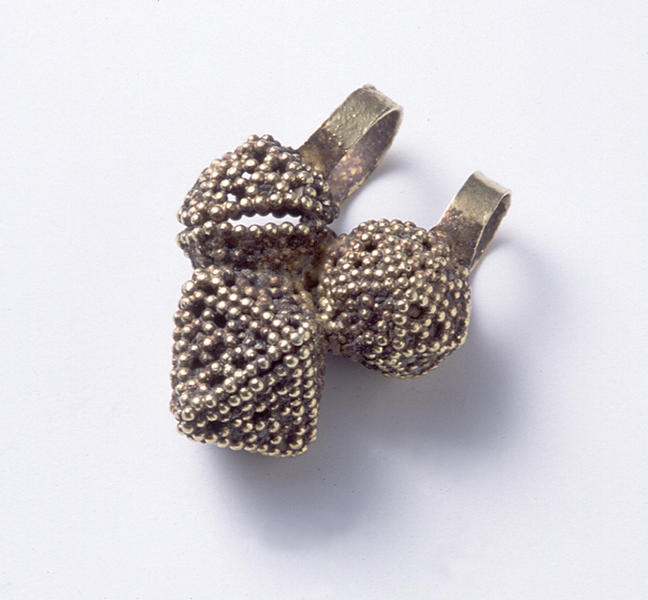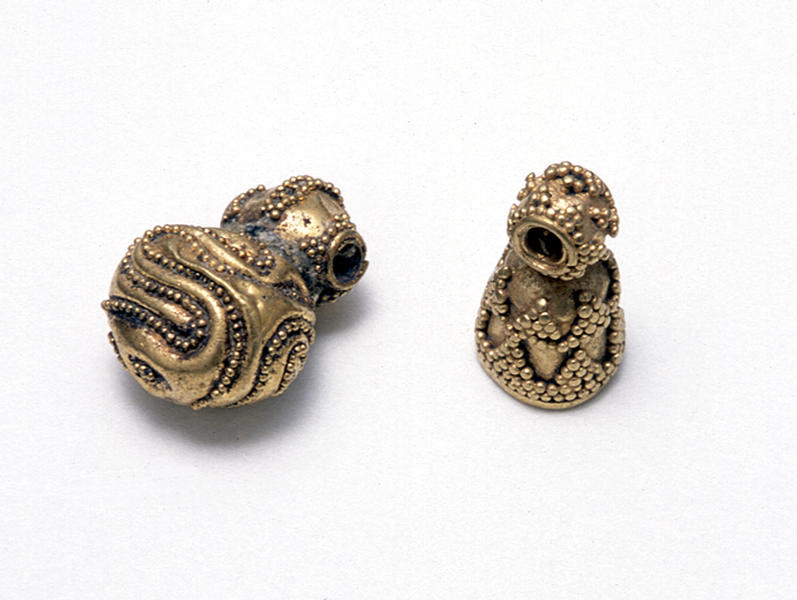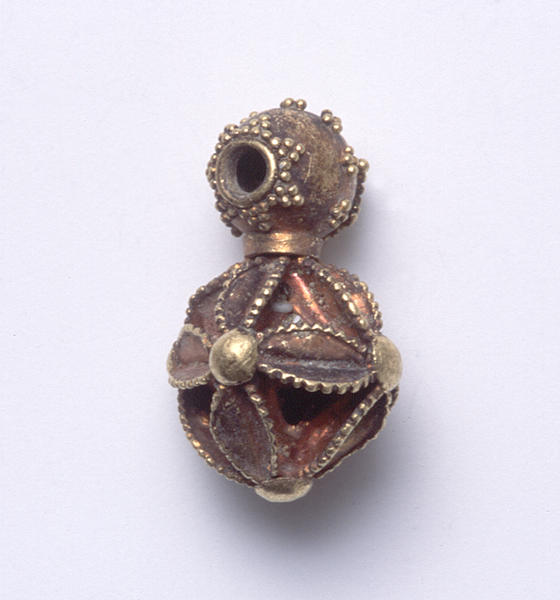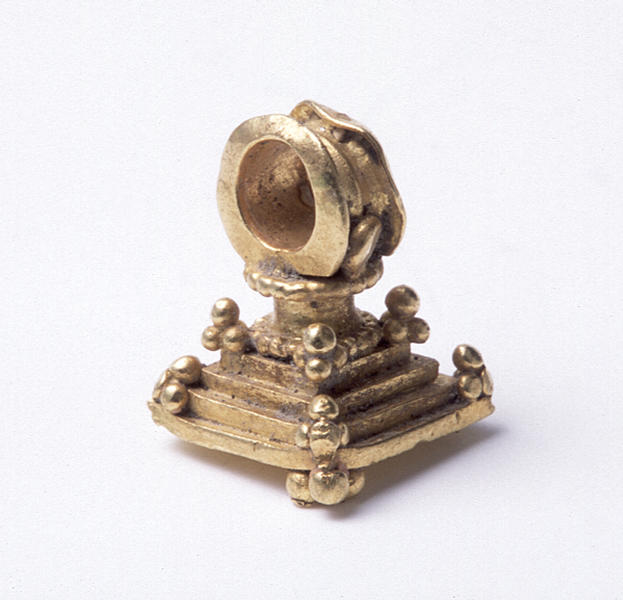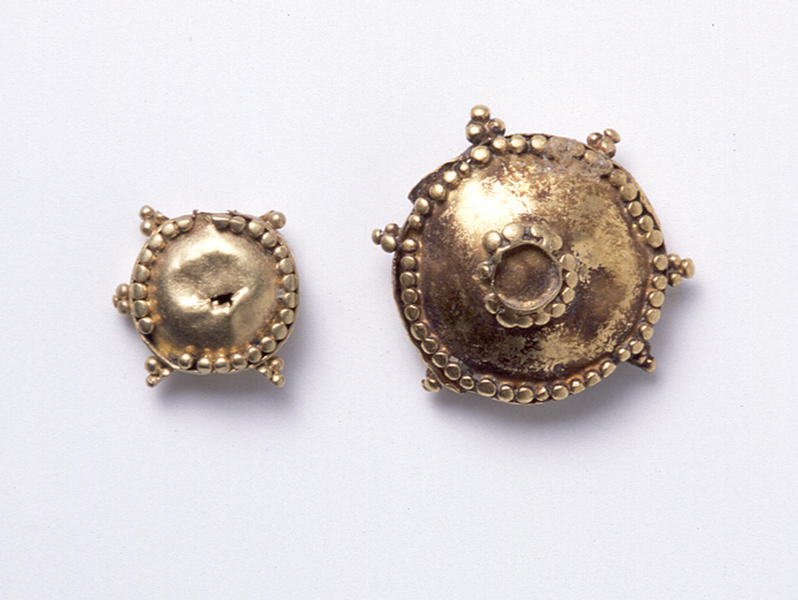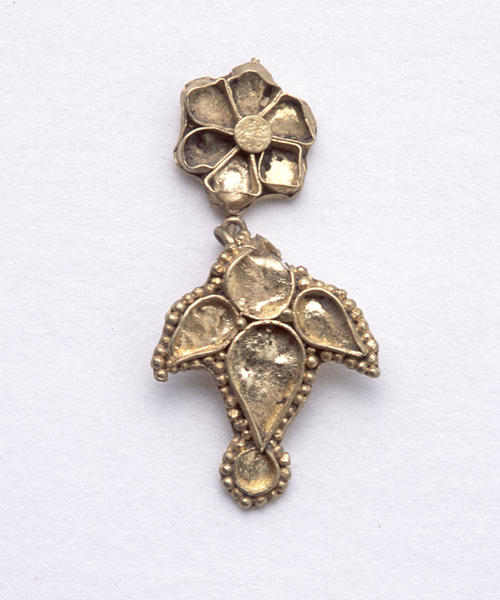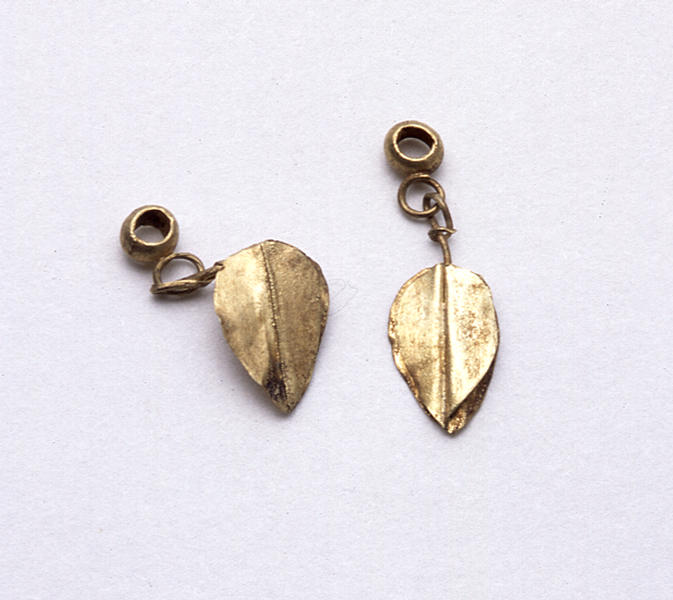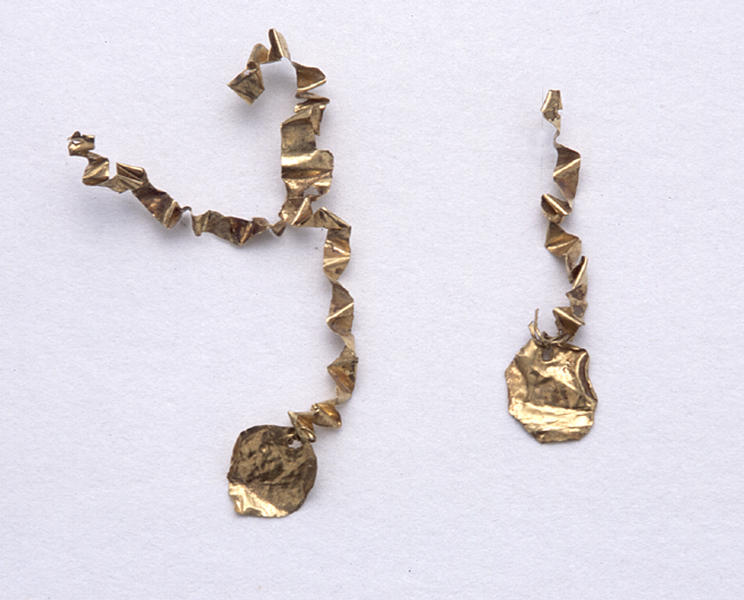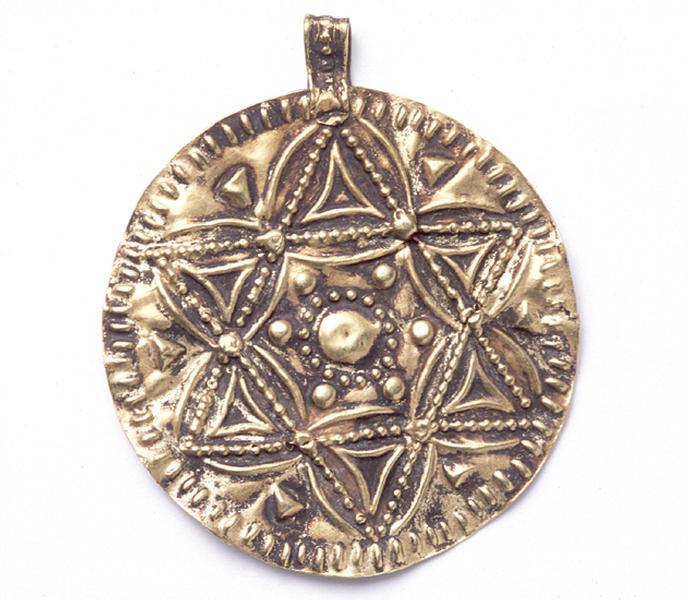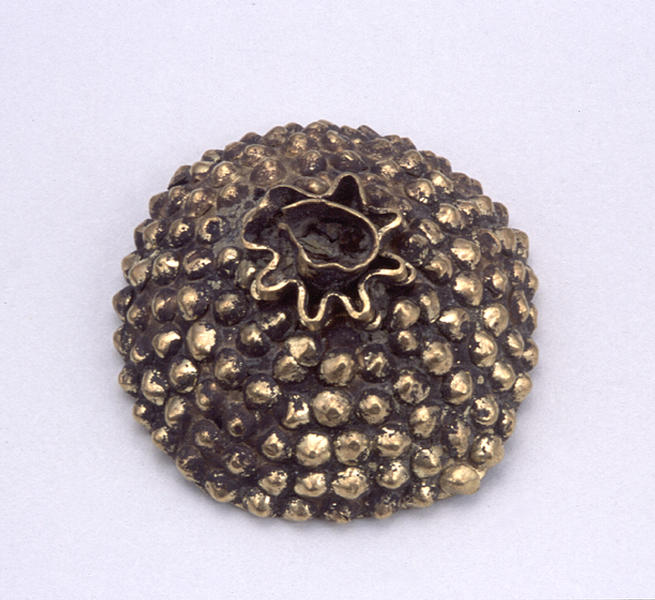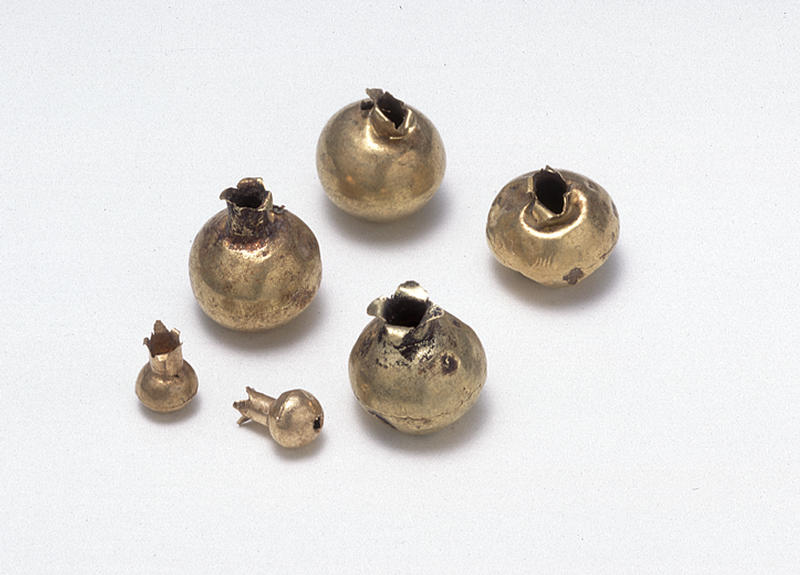ペンダント
- 紀元前4-紀元前2世紀 金
- 金
解説(古代バクトリア遺宝展)
前4―前2世紀
金
a:高2.2 cm 幅1.7 cm b:高1.3 cm 幅0.9 cm c:高1.1 cm 幅0.6 cm
d:高1.4 cm 幅0.8 cm e:高1.1 cm 幅0.9 cm f:高0.7 cm 幅0.7 cm
g:高1.3 cm 幅1.1 cm h:高2.1 cm 幅1.2 cm i:高1.7 cm 幅0.6 cm
j:高2.3 cm 幅0.5 cm k:高4.9 cm 幅4.3 cm l:高2.4 cm 幅2.4 cm
m:高0.8-1.4 cm 幅0.5-1.3 cm
aは細粒で装飾された3個の多面体と二つの環でペンダントを作っている。
B、c、dは細粒で装飾したビーズに球形(b)、鐘形c、七宝文を施した球形(d)が付けられている。
Eは方形の金板を数枚重ね階段状に構成し、細粒で装飾したものの上に環が付けられている。おそらくこの下に更に装飾が付けられていたものと想像される。
Fとgは金板で両面が膨らんだ円盤を作り細粒で装飾している。
Hはロゼット形と植物文形の座金が鎖で繋がれ、細粒で装飾されている。座金にはかつて貴石あるいはガラスのような象嵌が施されていたのであろう。
iは葉の形をした垂飾で中央の葉脈を隆起させている。この垂飾はギリシャや黒海周辺に見られる前4世紀頃の首飾にしばしば使われた要素である。
Jは蛇腹状に畳み皺の付けられたリボンに円盤状の垂飾が付けられている。
Kは円盤に七宝文で六星芒形の花文を刻み、上部に環を付けている。
Lは金板の打ち出しで半球形の表面に細粒状の装飾を施し、石榴の破口になぞらえた襞を付けている。これは石榴形の下の部分で、上の部分は失われている。
Mは金板で球形を作り、先が花弁状に開いた短い円筒形を付けて石榴形を作っている。
Catalogue Entry
4th‐2nd century B.C.
Gold
(a)H. 2.2 cm, W. 1.7 cm(b)H. 1.3 cm, W. 0.9 cm
cH. 1.1 cm, W. 0.6 cm(d)H. 1.4 cm, W. 0.8 cm
(e)H. 1.1 cm, W. 0.9 cm(f)H. 0.7 cm, W. 0.7 cm
(g)H. 1.3 cm, W. 1.1 cm(h)H. 2.1 cm, W. 1.2 cm
(i)H. 1.7 cm, W. 0.6 cm(j)H. 2.3 cm, W. 0.5 cm
(k)H. 4.9 cm, W. 4.3 cm(l)H. 2.4 cm, W. 2.4 cm
(m)H. 0.8-1.4 cm, W.0.5-1.3 cm
(a) This pendant is made up of two rings and three multi-faceted forms covered with granules decoration.
(b)-(d) These pendants are decorated with fine dotting, with earring b a ball-shaped bead, earring c shaped like a bell, and earring d formed of balls decorated with a concave triangles granules design.
(e) Several layers of rectangular gold sheets form a stepped plinth decorated with granules and topped by a ring. We can imagine that further decoration would have been attached to the bottom of the form.
(f), (g) Gold sheets were folded together, and their sides swelled to form a swollen disk shape that was then decorated with granules.
(h) Rosette designs and plant motif-shaped settings are linked by chains and decorated with granules. The settings would have been inlaid with either gems or glass.
(i) These leaf-shaped pendants have their central veins raised. This pendant is an element frequently used in necklaces or torques around the 4th century BC in both Greece and the Black Sea region.
(j) Disk-shaped pendants hang from ribbons folded with wrinkles in cornice shapes.
(k) A floral motif in the shape of a six-pointed star consisting of concaved triangles is incised on this flat disk. At its top a ring is attached.
(l) A hemispherical-shaped form beaten from a gold sheet is decorated with fine dotting. Folds shaped like the tip of a pomegranate are in the center of the hemisphere. This would have been the bottom half of a pomegranate with its top half lost.
(m) Balls of gold sheets are shaped into pomegranate-like forms with an attached cylinder of petal-like shapes forming the end of the pomegranate.
